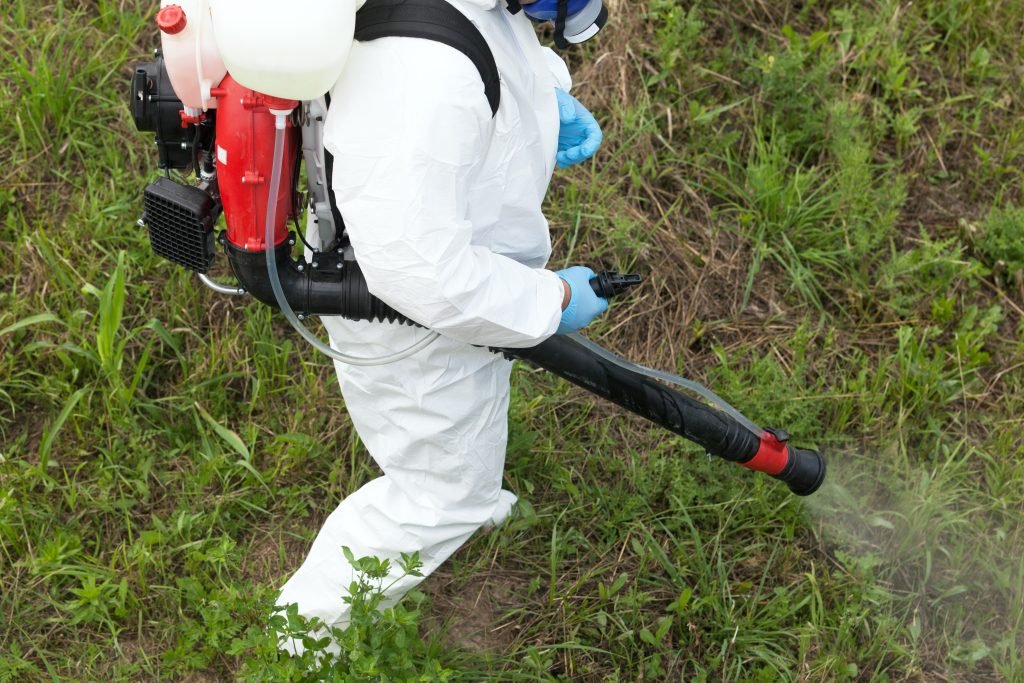Tick Control

What you should know about Ticks
For every homeowner, tick control is an invaluable service. Over 50,000 tick bites are reported each year. Tick bites carry dangerous bacteria, pathogens and diseases. This insect is hard to spot so maintaining a pest control service is essential to keeping ticks out of your yard and off of your family. Flies are one of the most common household pests. They can be bothersome and also a health hazard, much like ticks. We’ll talk about both flies and ticks so that you’ll have enough information to make an informed course of action.
How to Spot a Tick
Ticks are small and people tend to look past them easily. They are distantly related to spiders and are considered arachnids. Like spiders, ticks have eight legs and range in color from red, brown and black. Their oval shape of their bodies is flat. Before eating, their body is similarly sized to an apple seed.
Spotting a tick is easier if they have fed recently. When fed, their bodies will be two to three times larger. Therefore, after a tick has fed, it becomes easier to spot. Unfortunately, the life cycle of a tick requires it to feed to go onto the next stage of its life cycle.
A female tick can lay up to 5,000 eggs. However, these eggs take several months to hatch. Once the tick hatches, it is ready to feed off of a host. The host can be animal, human or reptile. Thus, their wide range of host possibilities makes them a difficult pest to eradicate.


Tick bites
Ticks burrow into the skin and insert a feeding tube. Ticks are done feeding after 10 days, where the engorged tick falls off of the host. The tick leaves behind a small red bump. Ticks prefer moist areas of the body like the groin, armpits or hair. Because ticks have dangerous pathogens that are easily transmitted to humans, the CDC published safe ways to remove and dispose of the tick as quickly as possible. Some of the diseases that ticks carry are:
- Anaplasmosis
- Babesiosis
- Borrelia mayonii
- Bourbon virus
- Colorado Tick Fever
- Lyme disease
Tick Control and Prevention
Tick control starts with prevention. Ticks are slow to move so they often hitch rides on animals or humans. They are found in grassy areas; mainly tall grass. Keeping your yard mowed and your yard treated by a pest control company is essential to living tick free.
Other preventive methods include:
- Applying insect repellent
- Wearing long pants and long sleeve shirts while walking in wooded areas
- Long socks
- Avoiding thick brush
- After every walk in a brush or wooded areas, check your skin and animals for ticks.

Flies
Flies are irritating to every homeowner and can be difficult to get rid of if you can’t find their breeding ground. They are common around the world and in all environments. Their diet consists of things like feces, garbage, fruit and rotting plant matter. Because flies come in a variety of sizes and colors, we should establish basic characteristics.
- One pair of wings
- Large head
- Six legs
- Large eyes
- Mouthpart is made to intake only a liquid diet
Flies have a life cycle of egg, larva, pupa and finally, adult. Female flies will lay their eggs on a food source. Larva is the stage that flies look white in color and are worm shaped. During this stage the fly will molt continuously until it creates a casing. While inside the casing, it will transform into a fly and hatch between 3-6 days. The adult fly will start the life cycle over again. A female will lay between 75 to 120 eggs in a batch and a can lay up to six batches.
Depending on the gender of the fly, it can live between 15 to 25 days. Females will live longer than males. While you can find flies at any time of the year, they tend to increase in population in warmer climates. There are a few common flies that are found in the United States. These include house flies, fruit flies, cluster flies, drain flies, mayflies and horse flies. All of these breeds carry dangerous pathogens from their food sources. House flies alone carry up to 65 illnesses that are harmful to humans.
Prevention
Flies are attracted to their food sources. Feces in the yard, rotting plant piles, trash and food that are left out, are all things that attract flies. Regularly picking up trash and removing animal feces is one of the best ways to prevent flies from laying eggs in your yard. Putting away leftover food and cleaning counters is also a good way to prevent flies from viewing your home as a good place to live. Of course, closing windows and doors is the most important way to prevent flies from entering your house.
EZ Pest Control knows that you want to keep your home and yard free from ticks and flies. This is why we provide our customers with regular yard and home inspections. Enlisting help with your fly or tick problem is the best course of action for immediate results. Out technicians are trained to get your fly and tick problems under control right away. Give us a call for your inspection and treatment plan.

Request your inspection now
Just fill out the contact form, and a representative of our team will be in touch shortly.
What pest do you need help with?
Please select to learn more